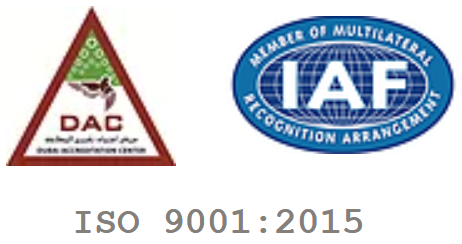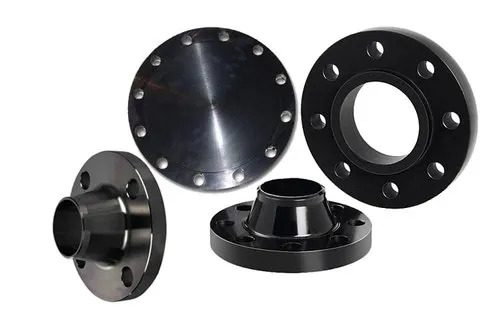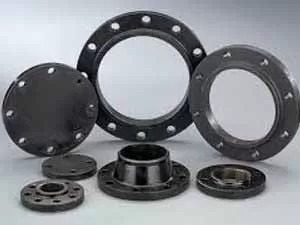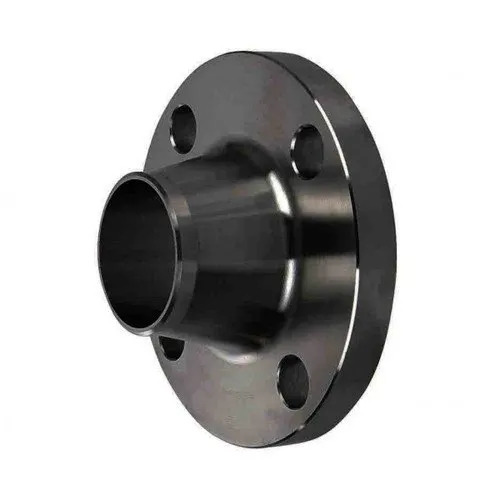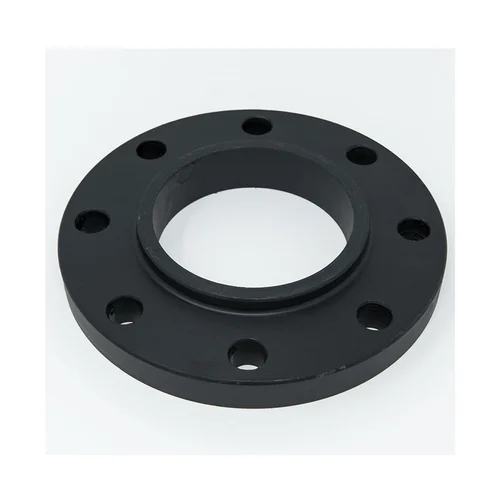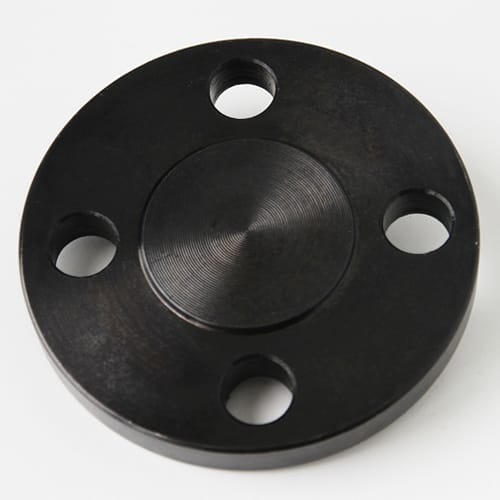Understanding the Different Types of Low Temperature Carbon Steel Flanges
Low Temperature Carbon steel flanges come in various types, each with its unique features and specifications. Understanding the different types of flanges available is the first step in choosing the right flange for your project.
The most common types of Low Temperature Carbon steel flanges include Weld Neck, Slip-On, Blind, Socket Weld, Lap Joint, and Threaded flanges.
Weld Neck flanges are designed to provide a long-lasting and leak-free connection. They're commonly used in high-pressure piping systems and have a neck that's welded to the pipe, creating a smooth transition between the pipe and flange.
Slip-On flanges are easy to install and remove and are ideal for low-pressure systems. They're slipped over the pipe and then welded in place.
Blind flanges are used to close the end of a pipe or vessel and are commonly used in systems that require periodic inspection or cleaning.
Socket Weld flanges are similar to slip-on flanges but have a socket in the bore to allow the pipe to be inserted. They're commonly used in small-bore piping systems and have a high-pressure rating.
Lap Joint flanges are designed to be used with a stub end and are ideal for systems that require frequent dismantling. They're commonly used in low-pressure systems.
Threaded flanges have internal threads and are screwed onto the pipe. They're commonly used in low-pressure systems and are easy to install and remove.
Factors to Consider When Choosing Low Temperature Carbon Steel Flanges
Choosing the right Low Temperature Carbon steel flange for your project requires careful consideration of various factors. Here are some of the critical factors to consider when selecting the right flange for your project.
Pressure Rating and Temperature Requirements
The pressure rating and temperature requirements are essential factors to consider when choosing Low Temperature Carbon steel flanges. The pressure rating is the maximum pressure that the flange can handle, while the temperature requirement is the maximum temperature that the flange can withstand.
It's crucial to select a flange that can handle the pressure and temperature requirements of your project. Failure to do so can result in leaks, damage to equipment, and even safety hazards.
Size and Dimensions
The size and dimensions of the flange must be compatible with the piping system. The size of the flange is determined by the size of the pipe to which it's connected. It's essential to select a flange that matches the size of the pipe to ensure a secure and leak-free connection.
The dimensions of the flange, such as the bolt hole diameter, thickness, and outside diameter, must also be considered. The dimensions must match the piping system and other components to ensure a proper fit.
Corrosion Resistance and Material Selection
Low Temperature Carbon steel flanges are known for their excellent corrosion resistance, making them ideal for use in harsh environments. However, not all Low Temperature Carbon steel Low Temperature Carbon s offer the same level of corrosion resistance.
The material selection is critical when choosing Low Temperature Carbon steel flanges. Factors such as the type of fluid or gas being transported, the temperature, and the level of corrosiveness must be considered.
Some of the most commonly used Low Temperature Carbon steel Low Temperature Carbon s for flanges include 304, 316, 321, and 347. It's essential to select the right material for your project to ensure corrosion resistance and longevity.
Flange Face and Surface Finish
The flange face and surface finish are crucial factors that affect the sealing performance of the flange. The flange face can be flat, raised, or ring joint, and the surface finish can be smooth, serrated, or grooved.
The flange face and surface finish must be compatible with the gasket and the mating flange to ensure a secure and leak-free connection.
End Connections and Joining Methods
The end connections and joining methods must be considered when choosing Low Temperature Carbon steel flanges. The end connection can be butt-weld, socket-weld, threaded, or flanged.
The joining method must be compatible with the piping system and other components. Factors such as the pressure and temperature requirements, the level of vibration and movement, and the ease of maintenance must be considered when selecting the right joining method.
Advantages of Using Low Temperature Carbon Steel in Industrial Applications
Low Temperature Carbon steel flanges offer a range of advantages that make them a popular choice in many industrial applications. Some of the key advantages of Low Temperature Carbon steel flanges include their cost-effectiveness, durability, corrosion resistance, and high-temperature tolerance.
Cost-Effective and Durable
One of the most significant advantages of Low Temperature Carbon steel flanges is their cost-effectiveness. They offer a long service life and require minimal maintenance, resulting in significant savings over time. Low Temperature Carbon steel flanges are also highly durable and can withstand extreme temperatures, pressures, and corrosive conditions, making them ideal for use in demanding environments.
Improved Corrosion Resistance
Another advantage of low temperature carbon steel is its improved corrosion resistance compared to other types of carbon steel. Corrosion can be a significant problem in industrial applications, especially those that involve exposure to water, chemicals, or other corrosive substances.
Low temperature carbon steel contains a higher percentage of nickel and other alloys that make it more resistant to corrosion than other types of carbon steel. This makes it an ideal choice for applications that require high resistance to corrosive environments, such as marine and offshore industries.
Suitable for Low-Temperature Environments
As its name suggests, low temperature carbon steel is designed to withstand low temperatures. It can maintain its strength and toughness even in sub-zero temperatures, making it an ideal choice for applications that involve exposure to extreme cold.
Industries like oil and gas, where equipment and structures are exposed to sub-zero temperatures, often rely on low temperature carbon steel for its ability to maintain its properties in harsh environments. Low temperature carbon steel is also commonly used in the construction of cryogenic storage tanks for liquefied natural gas (LNG) and other cryogenic fluids.
Characteristics and Properties of Low Temperature Carbon Steel
One of the key characteristics of LTCS is its ability to maintain its strength and ductility at low temperatures. Unlike other types of steel, which can become brittle and susceptible to cracking at low temperatures, LTCS retains its toughness and ductility even in extreme cold environments.
LTCS is also highly resistant to corrosion and oxidation, making it an ideal material for use in harsh environments. It is also highly resistant to impact and wear, making it suitable for use in applications where equipment may be subjected to heavy use or stress.
The mechanical properties of LTCS are also impressive. It has a high yield strength, meaning it can withstand high levels of stress without deforming or breaking. It also has a high tensile strength, which means it can resist stretching or pulling forces.
LTCS Applications in Various Industries
Low temperature carbon steel is a versatile material that finds use in various industries. In the oil and gas industry, low temperature carbon steel is used in the construction of pipelines, storage tanks, and other equipment that must withstand extreme temperatures and harsh environments.
It is also used in the construction of offshore platforms, where it is exposed to corrosive seawater and harsh weather conditions.
In the chemical industry, low temperature carbon steel finds use in the construction of chemical processing equipment, storage tanks, and piping systems. Its resistance to corrosion and toughness make it an ideal choice for handling corrosive chemicals and substances.
Low temperature carbon steel is also used in the marine industry, where it is used in the construction of ships, offshore platforms, and other marine structures. Its resistance to corrosion and toughness make it an ideal choice for applications that involve exposure to seawater and harsh weather conditions
Price List of Low Temperature Carbon Steel Flanges
Prices for Low Temperature Carbon Steel Flanges are very affordable.
Please click on the "Ask for Quote" button or
click here to request the updated price list and ready stock information along with your requirement.
TESCO STEEL & ENGINEERING maintains a stock of all standard items and can export them at the best price.
